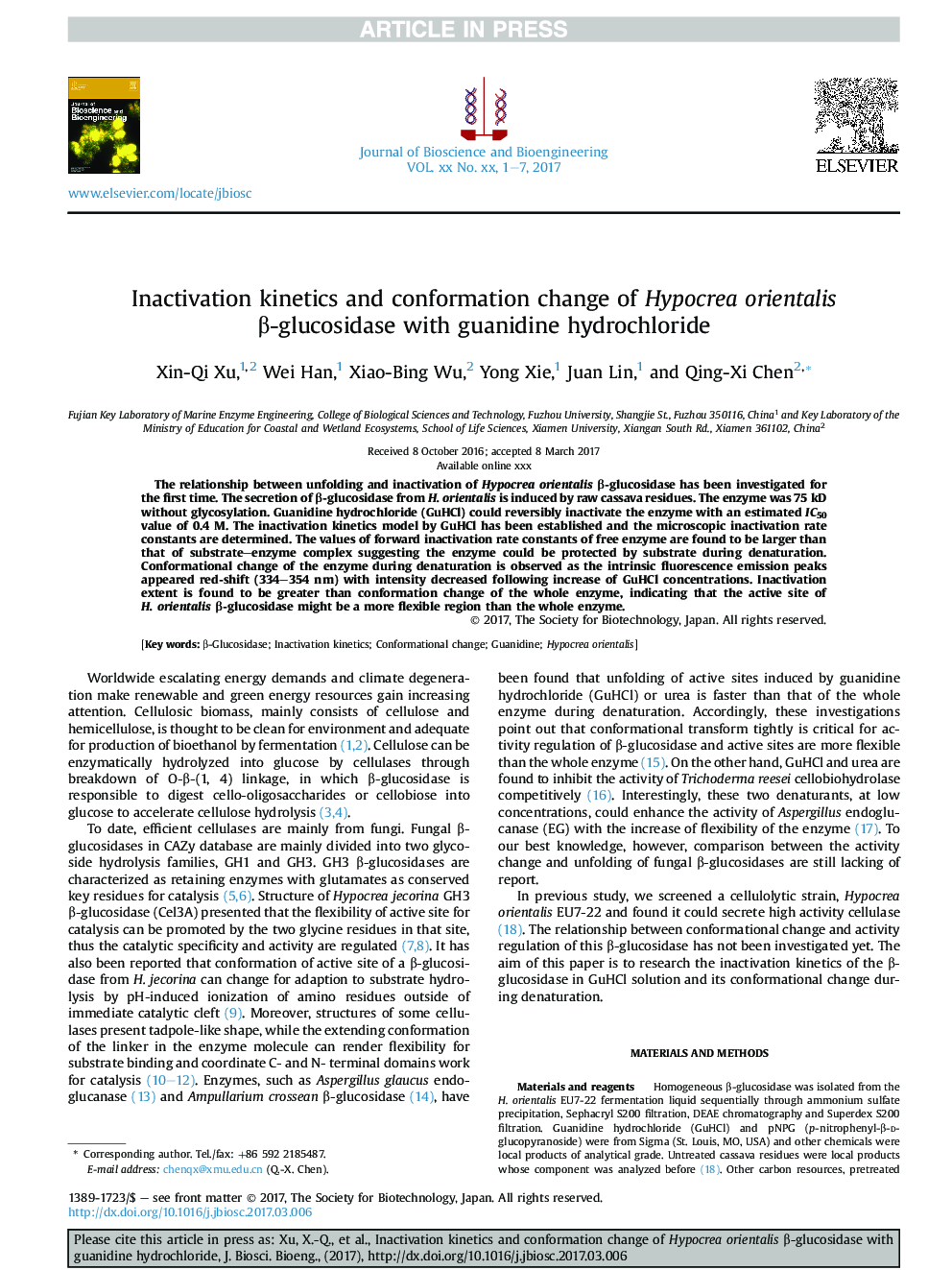| Article ID | Journal | Published Year | Pages | File Type |
|---|---|---|---|---|
| 4753281 | Journal of Bioscience and Bioengineering | 2017 | 7 Pages |
Abstract
The relationship between unfolding and inactivation of Hypocrea orientalis β-glucosidase has been investigated for the first time. The secretion of β-glucosidase from H. orientalis is induced by raw cassava residues. The enzyme was 75 kD without glycosylation. Guanidine hydrochloride (GuHCl) could reversibly inactivate the enzyme with an estimated IC50 value of 0.4 M. The inactivation kinetics model by GuHCl has been established and the microscopic inactivation rate constants are determined. The values of forward inactivation rate constants of free enzyme are found to be larger than that of substrate-enzyme complex suggesting the enzyme could be protected by substrate during denaturation. Conformational change of the enzyme during denaturation is observed as the intrinsic fluorescence emission peaks appeared red-shift (334-354 nm) with intensity decreased following increase of GuHCl concentrations. Inactivation extent is found to be greater than conformation change of the whole enzyme, indicating that the active site of H. orientalis β-glucosidase might be a more flexible region than the whole enzyme.
Related Topics
Physical Sciences and Engineering
Chemical Engineering
Bioengineering
Authors
Xin-Qi Xu, Wei Han, Xiao-Bing Wu, Yong Xie, Juan Lin, Qing-Xi Chen,
